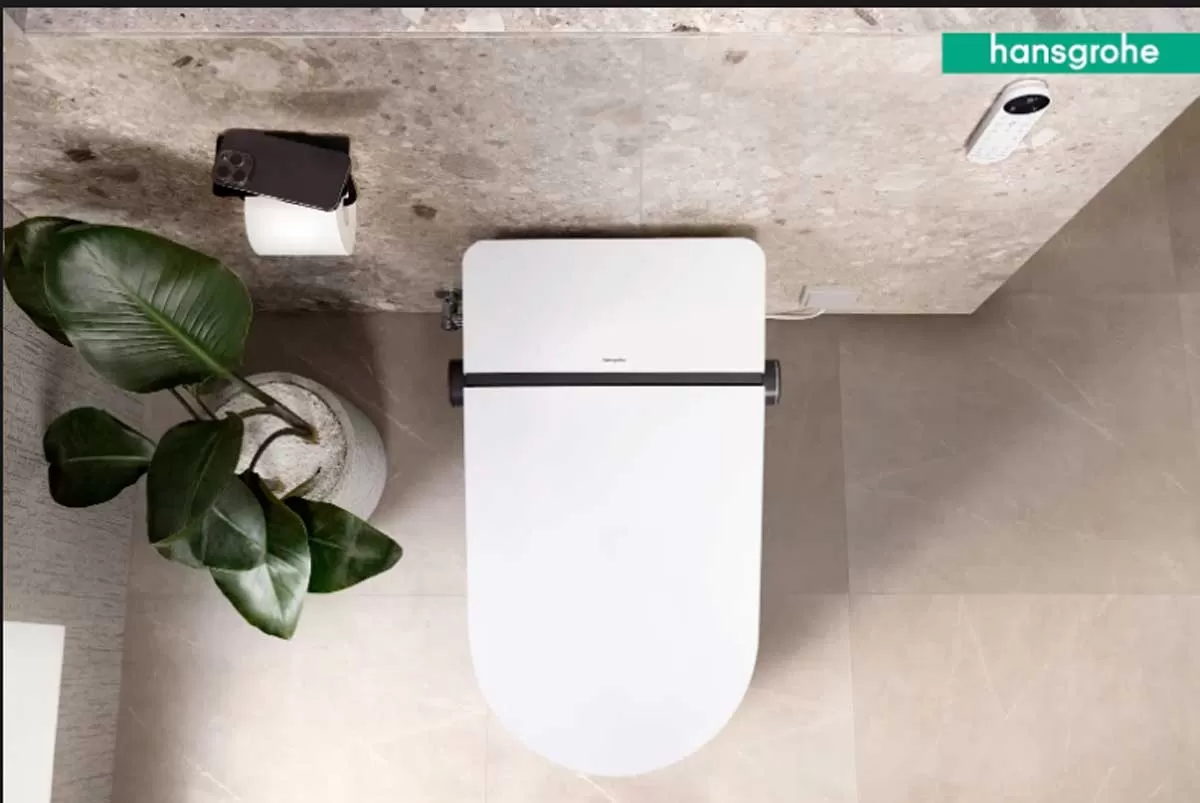Supermetal!
01 Jun 2012
7 Min Read
CW Team
In the next in a series of features on building materials, CW focuses on aluminium as a promising material for the building and construction industry.
Here is one industry in the world that claims to become greenhouse gas neutral by 2020 – just another reason to love aluminium! “Amongst metals, aluminium ranks second in terms of volumes used (next only to steel) owing to its versatility,” affirms Prof KSS Murthy, Hon General Secretary, Aluminium Association of India. And, with consistent growth over the past 50 years, today this material is recognised as a natural partner of the building industry with its many positives. Murthy shares with Shriyal Sethumadhavan the factors that make aluminium the ideal choice for the building and construction industry…
Manufacturing
While 2-3 tonne of bauxite yields 1 tonne of alumina, 2 tonne of alumina yields 1 tonne of aluminium. Unlike other base metal ores, bauxite does not require complex processing. Although most mined bauxite is of an acceptable grade, if required, it can be improved by a simple but expensive process of removing clay. Done in combinations of washing, wet screening, cycloning and sorting, the derived beneficiating ore also reduces the amount of material to be transported and processed at the refinery. However, the benefits need to be weighed against the amount of energy and water used in the process and the environmental
impact of the fine waste produced and stored in tailing ponds. After beneficiation, bauxite is refined into alumina by the Bayer process, which is then smelted through the hall/heroult electrolytic process into aluminium.
Application and usage
Owing to its combination of strength, lightness and good ductility, aluminium makes wall and roof construction possible, which otherwise would have been expensive with the use of other materials. Also, being corrosion-resistant, this material is not just suitable for roofs but also for façade cladding, stairways, railings, etc. Also, its aesthetics add to its suitability for today’s complex window frames, doors and interior claddings. And, its recyclable properties make it a perfect match for a wide range of building applications such as formwork, curtain-walling, doors and windows.
Projects plus
Some landmark projects in which this material has been used include Bearys Global Research Triangle in Bengaluru (a Platinum-rated green building); Tata Consulting Engineers, Headquarters (TCE HQ) in Jamshedpur (Platinum-rated green building with Building Integrated Photovoltaic façade application), HBS India Corporate Office in Bengaluru (with 100 per cent sustainable construction material); Indira Gandhi Bus Terminal in Kochi; Indira Gandhi Indoor Stadium in New Delhi; Howrah Railway Station in Kolkata; and Wicona in Germany (test centre: energy surplus building). And, with leading produ-cers like Hindalco, Nalco, Balco and Vedanta in the market, it will soon be used in shutters, grills, ladders, handrails, modular furniture and structural glazing.
Apt for green
A cost-effective material, aluminium, when extruded, offers unparalleled production efficiencies that yield quantifiable results through design flexibility, production performance, cost savings and eco-friendly features. Extruded aluminium is durable with a long lifecycle, structurally strong, making it perfect for use in green buildings. Moreover, modern glazing units mounted with extruded aluminium framing now use advanced thermal barrier technologies that exceed stringent building standards.
The material’s recyclability ensures its use without degradation or loss in quantity or physical characteristics and retained value. A study conducted at the Delft University of Technology in the Netherlands found that the collection and recovery of aluminium during the demolition of a cross-section of commercial buildings in six European countries was between 90 and 98 per cent. The conclusion was that recycling of aluminium from such buildings was economically viable, sound and contributed to resource sustainability along with less debris. In fact, the material’s benefits are multiplied each time an aluminium building product is recycled, unlike any other material. Moreover, recycling greatly reduces the energy and resulting emissions needed to produce aluminium from bauxite. And, with lower environmental impact comes lower operating and occupancy costs for energy and maintenance.
No other material can be reused or recycled to this extent. Recycling greatly reduces the energy and resulting emissions needed to produce aluminium from bauxite. And at the end of its life, this material retains its value, and deconstruction of aluminium building materials means less debris in our landfills and maximum use of aluminium recycled materials.
Energy bank
While vast reserves of recycled aluminium constitute an energy bank, its high collection and recycling rates confirm the bank’s potential. With its ability to be used repeatedly, retaining 95 per cent of its original energy, it also commands a tremendous relative energy cost advantage in its reusable form compared to steel or plastic. A comparison between aluminium and steel shows that while the latter is prone to rusting, costly to maintain, difficult to repair and low on durability, the former offers contrary advantages in terms of being rust proof, having better insulation from heat and an overall resale value. Moreover, when compared to Galvalume – a zinc-aluminium alloy coated steel sheet – aluminium is more economical, even if the resale value is not considered (See Table A).
Structural longevity
While it offers designers and manufacturers myriad choices and combinations, aluminium maintains its structural stability even under extreme conditions and temperature changes and in terms of elastic modulus or stiffness. Extruded aluminium building components are more resistant to deformation caused by climate changes and building movement over time and need minimal maintenance. It also resists the forces of time through being impervious to rust, humidity, temperature warping, or brittleness. And, in terms of appearance, the building’s façade retains the finishes and visual appeal envisaged by the designer.
Additional advantages
Owing to its eco-friendly and fire resistant properties, aluminium competes well with plastic and wood. It does not require any periodic maintenance, resulting in low maintenance costs and enables efficient cooling and heating. It also ensures perfect locking between frames and windows or doors and can also be insulated wherever required. Speaking of technical
advantages, the inherent strength of aluminium allows slim sections (meaning less visible aluminium), reducing the weight of the system with no compromise on quality. In terms of design flexibility, this material can achieve complex shapes and curves and comes with a wide choice of finishes; it can be powder coated or anodised, and dual colour options are available for internal and external applications. Moreover, the use of aluminium reduces air leakage from the building envelope to improve thermal efficiency. Hence, with freedom from replacement hassles and shiny roofs after every rain, aluminium is undoubtedly a beneficial investment.
Ideal alternative!
Today, the building and construction industry is faced with many environmental challenges, and aluminium’s formability, high strength-to-weight ratio and several other properties make it the perfect material for a wide range of applications. With India’s growing GDP, change in life-style, demand for lifetime value pro-ducts, growing infrastructure and real estate, and the replacement market, there will be an increase in the demand for aluminium. And, by 2020, the construction sector in India is projected to emerge as the largest end-use sector for aluminium. What’s more, its overall consumption is estimated to grow at a CAGR of 18-20 per cent to around 1,700 kilo tonne.
EngineerSpeak
Elaborating on his experience with aluminium as a construction material, BN Chaudhary, Executive Engineer, Provincial Division, PWD Haridwar (Uttarakhand), says, “Twenty-five years ago, we used teak or deodar wood for panelling.
Eventually, this was substituted by aluminium, and today, for a 50-ft-high wall panelling in a building, we use a 3 mm aluminium sheet; if above 50 ft, 5 mm sheets are used. Being a soft material, initially, people were uncertain of its usage; but today, the performance is very clear. The material is suitable for institutional buildings, hospitals, colleges, shopping complexes and multi-corporate buildings; we use 14 grade aluminium for window frames. As it is fabricated in the factory, this material is easy to use and construction takes place at a faster pace. Its durability goes up to 50-100 years; it is erosion-proof and suitable for areas affected by termites and white ants. If low-grade, cheap quality aluminium is used, it can be flammable. However, in India, we have not yet witnessed any such issue. Nevertheless, awareness is required. While aluminium is most popular in urban areas, rural areas are not too exposed to it. Nonetheless, its demand will definitely increase with time. Engineers and architects will introduce new designs, techniques and ways to use aluminium in construction.”
Share your experience with any construction material at feedback@ASAPPmedia.com

















